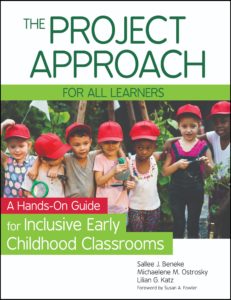Sparking Student Curiosity in Winter – Q&A with Sallee Beneke and Michaelene Ostrosky

We asked Sallee Beneke & Michaelene Ostrosky, co-authors of The Project Approach for All Learners: A Hands-On Guide for Inclusive Early Childhood Classrooms, to give us an example of how you can use the popular teaching method to spark student curiosity this winter.
Q: What sort of project could a teacher choose for the winter months?
A: Projects are based on child interest, and as the seasons change, children notice many interesting things in their environment that could become a project. For example, in areas where snow is plentiful, children might be interested in the different types of boots people wear, and this could lead to an investigation of snow shoes or ice skates.
Children also might explore properties of snow (e.g., what happens when they melt it, shape it, make tracks in it, find tracks in it, paint with it, measure its depth, weigh it). However, if children live in an area where it does not snow, it would be better to select a topic that they can investigate first-hand. Children in south Florida might be interested in a project on the monarch butterflies that winter over in their area, or the sandhill cranes that hatch in winter and are often seen strolling with their parents.
Interested in Learning More?

The Project Approach for All Learners
A proven and popular teaching method, the Project Approach engages the natural curiosity of children through in-depth investigations of topics that capture their interest. Now there’s a guidebook that helps you use this child-centered approach to reach and teach all learners in your early childhood classroom—regardless of background or ability. Check out the book »
Learn More. What is The Project Approach? »
Read a free excerpt from the book. Getting started with The Project Approach »
Watch the free webinar. Inclusive ECE Classrooms and The Project Approach »

